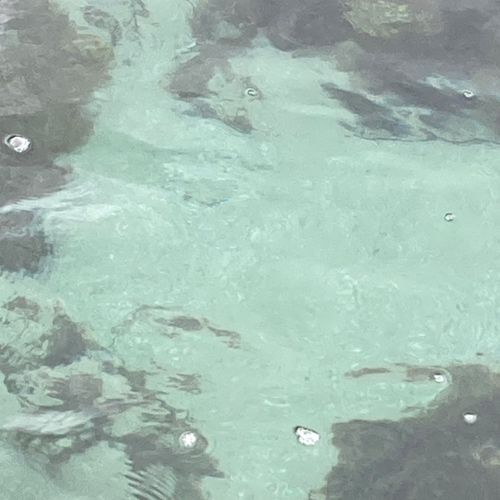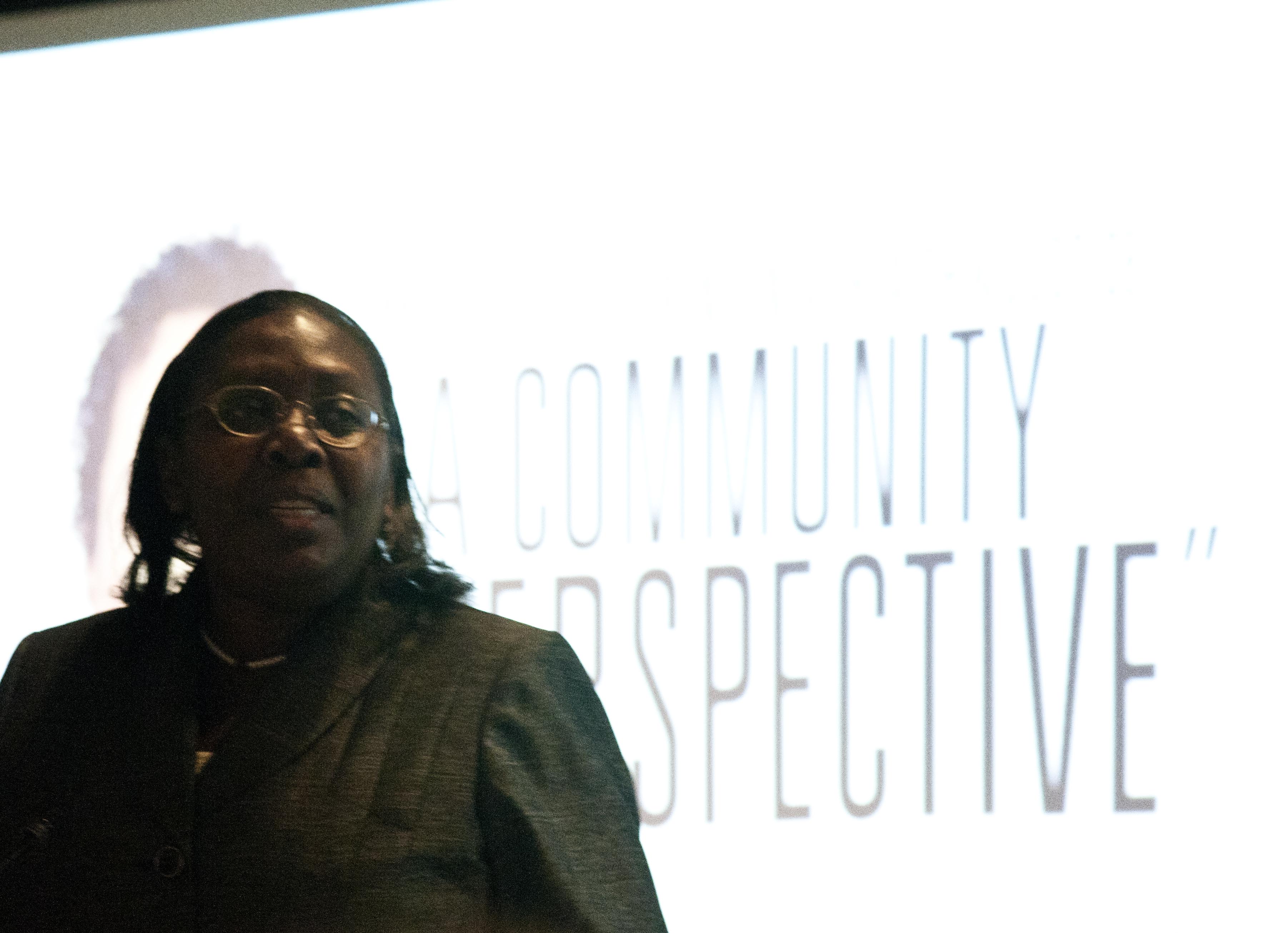Dorceta E. Taylor
Dublin Core
Title
Rights
Person Item Type Metadata
Birth Date
Birthplace
Bibliography
Treloar, D., Taylor, D. E., & Bell, A. (2024). Understanding Food Insecurity and Participation in Food Assistance Programs among Hispanic/Latino Residents of Hialeah, Florida, before and during the COVID-19 Pandemic. Sustainability (2071-1050), 16(17), 7612. https://doi.org/10.3390/su16177612
Taylor, D. E., Bell, A., Treloar, D., Ajani, A., Alvarez, M., Hamilton, T., Velazquez, J., Nandar, P., Fillwalk, L., & Ard, K. J. (2024). Defying the Food Desert, Food Swamp, and Supermarket Redlining Stereotypes in Detroit: Comparing the Distribution of Food Outlets in 2013 and 2023. Sustainability (2071-1050), 16(16), 7109. https://doi.org/10.3390/su16167109
Bell, A., & Taylor, D. E. (2024). A Vanishing Food Infrastructure: The Closure of Food Outlets in Flint in a Pandemic Era. American Behavioral Scientist, 68(4), 550–584. https://doi.org/10.1177/00027642221142202
Taylor, D. E. (2024). Environment and Social Inequality. American Behavioral Scientist, 68(4), 411–415. https://doi.org/10.1177/00027642231222745
Taylor, D. E., Bell, A., & Saherwala, A. (2024). Understanding Food Access in Flint: An Analysis of Racial and Socioeconomic Disparities. American Behavioral Scientist, 68(4), 503–549. https://doi.org/10.1177/00027642221142201
Taylor, D. E., Thompson, K., Abednour-Brown, D., McCoy, E., Daupan, S. M., & Hollenquest, C. (2024). Community Gardens in Michigan: Demographic Attributes of Managers, Neighborhood Characteristics, and the Impacts of a Pandemic. American Behavioral Scientist, 68(4), 585–619. https://doi.org/10.1177/00027642221142204
Taylor, D. E. (2024). The Role of Gender, Race/Ethnicity, and Other Factors in Influencing Top Executive Compensation in American Environmental Nonprofits. American Behavioral Scientist, 68(4), 416–448. https://doi.org/10.1177/00027642221142203
Taylor, D. E. (2024). Prisons, Jails, and the Environment: Why Environmentalists Should Care About Mass Incarceration? American Behavioral Scientist, 68(4), 449–485. https://doi.org/10.1177/00027642221142206
Taylor, D. E., Farias, L. M., Kahan, L. M., Talamo, J., Surdoval, A., McCoy, E. D., & Daupan, S. M. (2022). Understanding the challenges faced by Michigan’s family farmers: race/ethnicity and the impacts of a pandemic. Agriculture & Human Values, 39(3), 1077–1096. https://doi.org/10.1007/s10460-022-10305-6
Taylor, D. E., Wright, T., Ortiz, I., Surdoval, A., McCoy, E. D., & Daupan, S. M. (2022). Rising food insecurity and the impacts of the COVID-19 pandemic on emergency food assistance in Michigan. Journal of Agriculture, Food Systems & Community Development, 11(3), 27–55. https://doi.org/10.5304/jafscd.2022.113.008
Taylor, D. E. (2022). The Transparency Challenge in Environmental Organizations: Factors Influencing Whether Institutions Collect and Reveal Diversity Data. American Behavioral Scientist, 66(7), 812–855. https://doi.org/10.1177/00027642211013383
Taylor, D. E. (2022). Understanding Black, Asian, Latinx, and White College Students’ Views of Nature: Frequent Thoughts About Wild, Remote, Rural, and Urban Landscapes. American Behavioral Scientist, 66(7), 989–1031. https://doi.org/10.1177/00027642211013403
Taylor, D. E. (2021). Rachel Carson - a woman ahead of her time. Frontiers In Ecology and The Environment, 19(9), 487. https://doi.org/10.1002/fee.2422
Taylor, D. E. (2019). College Students and Nature: Differing Thoughts of Fear, Danger, Disconnection, and Loathing. Environmental Management, 64(1), 79–96. https://doi.org/10.1007/s00267-019-01172-9
Taylor, D. E., Paul, S., & McCoy, E. (2019). Diversity, Equity, and Inclusion and the Salience of Publicly Disclosing Demographic Data in American Environmental Nonprofits. SUSTAINABILITY, 11(19), 5491. https://doi.org/10.3390/su11195491
Taylor, D. E. (2018). Enhancing racial diversity in the Association for Environmental Studies and Sciences. Journal of Environmental Studies & Sciences, 8(4), 379–384. https://doi.org/10.1007/s13412-018-0518-1
Taylor, D. E. (2018). Black Farmers in the USA and Michigan: Longevity, Empowerment, and Food Sovereignty. Journal of African American Studies, 22(1), 49–76. https://doi.org/10.1007/s12111-018-9394-8
Burdine, J. D., & Taylor, D. E. (2018). Neighbourhood characteristics and urban gardens in the Toledo metropolitan area: staffing and voluntarism, food production, infrastructure, and sustainability practices. Local Environment, 23(2), 198–219. https://doi.org/10.1080/13549839.2017.1397614
Taylor, D. E. (2018). Racial and ethnic differences in the students’ readiness, identity, perceptions of institutional diversity, and desire to join the environmental workforce. Journal of Environmental Studies & Sciences, 8(2), 152–168. https://doi.org/10.1007/s13412-017-0447-4
Taylor, D. E. (2018). Racial and Ethnic Differences in Connectedness to Nature and Landscape Preferences Among College Students. Environmental Justice (19394071), 11(3), 118–136. https://doi.org/10.1089/env.2017.0040
Taylor, D. E. (2016). The rise of the American conservation movement: power, privilege, and environmental protection. Duke University Press. https://doi.org/10.1515/9780822373971
Taylor, D. E. (2015). Gender and Racial Diversity in Environmental Organizations: Uneven Accomplishments and Cause for Concern. Environmental Justice (19394071), 8(5), 165–180. https://doi.org/10.1089/env.2015.0018
Taylor, D. E. (2014). Toxic communities : environmental racism, industrial pollution, and residential mobility. New York University Press. https://ebookcentral.proquest.com/lib/unimelb/detail.action?docID=1685764
Taylor, D. E. (2011). Letters to the editor. Journal of American History, 98(3), 954–955. https://doi.org/10.1093/jahist/jar517
Taylor, D. E. (2010). Environmental And Social Justice : An International Perspective. Emerald. https://ebookcentral.proquest.com/lib/unimelb/detail.action?docID=587939
Taylor, D. E. (2009). The Environment and the People in American Cities, 1600s-1900s : Disorder, Inequality, and Social Change. Duke University Press. https://www.degruyter.com/document/doi/10.1515/9780822392248/html
Taylor, D. E. (2007). Diversity and Equity in Environmental Organizations: The Salience of These Factors to Students. Journal of Environmental Education, 39(1), 19–44. https://doi.org/10.3200/JOEE.39.1.19-44
Taylor, D. E. (2002). Race, class, gender, and American environmentalism (No. 534). US Department of Agriculture, Forest Service, Pacific Northwest Research Station.
Taylor, D. E. (2000). The Rise of the Environmental Justice Paradigm: Injustice Framing and the Social Construction of Environmental Discourses. American Behavioral Scientist, 43(4), 508. Accessed November 4, 2024. https://oce.ovid.com/article/00000400-200043040-00003/HTML
Taylor, D. E. (2000). Meeting the Challenge of Wild Land Recreation Management: Demographic Shifts and Social Inequality. Journal of Leisure Research, 32(1), 171. https://doi.org/10.1080/00222216.2000.11949910
Taylor, D. E. (1999). Central Park as a Model for Social Control: Urban Parks, Social Class and Leisure Behavior in… Journal of Leisure Research, 31(4), 420. https://doi.org/10.1080/00222216.1999.11949875
Taylor, D. E. (1997). [Review of Environmental Sociology: A Social Construtionist Perspective, by J. A. Hannigan]. Contemporary Sociology, 26(6), 733–734. https://doi.org/10.2307/2654649
Taylor, D. E. (1995). [Review of Environmental Inequalities: Class, Race, and Industrial Pollution in Gary, Indiana, 1945-1980., by A. Hurley]. Contemporary Sociology, 24(6), 788–789. https://doi.org/10.2307/2076695
Taylor, D. E. (1994). [Review of Element of Risk: The Politics of Radon, by L. A. Cole]. Contemporary Sociology, 23(4), 519–519. https://doi.org/10.2307/2076365
Taylor, D. E. (1993). Minority Environmental Activism in Britain: From Brixton to the Lake District. Qualitative Sociology, 16(3), 263. https://doi.org/10.1007/BF00990102
Taylor, D. E. (1989). Blacks and the environment: toward an explanation of the concern and action gap between blacks and whites. Environment and Behavior, 21(2), 175. Accessed November 4, 2024. https://oce.ovid.com/article/00001406-198921020-00003/HTML
Secondary Text
Lane, M. K. M., Rudel, H. E., Wilson, J. A., Erythropel, H. C., Backhaus, A., Gilcher, E. B., Ishii, M., Jean, C. F., Lin, F., Muellers, T. D., Wang, T., Torres, G., Taylor, D. E., Anastas, P. T., & Zimmerman, J. B. (2023). Green chemistry as just chemistry. Nature Sustainability, 6(5), 502–512. https://doi.org/10.1038/s41893-022-01050-z
Bhattacharyya, A. (2017). Adaptation Done Right. Diverse: Issues in Higher Education, 34(22), 20–23. https://research.ebsco.com/c/xppotz/viewer/html/yiq2y4vhtz
Sicotte, D. M. (2016). Toxic Communities: Environmental Racism, Industrial Pollution and Residential Mobility. Social Forces, 94(4), 1–3. https://doi.org/10.1093/sf/sou114
Čapek, S. M. (2015). Toxic Communities: Environmental Racism, Industrial Pollution, and Residential Mobility. City & Community, 14(1), 93–95. https://doi.org/10.1111/cico.12092Extra Resources
Environmental Racism: A Hidden Threat with Dr. Dorceta Taylor (April 19, 2021). PushBlack. YouTube. . Accessed November 4, 2024. https://youtu.be/5Iukx1CWv3g
Willis, S. (October 23, 2020). Black Women Are Leading The Way In Environmental Justice. Essence. Accessed November 4, 2024. https://www.essence.com/news/black-women-are-leading-the-way-in-environmental-justice/
Raimi, D. (June 23, 2020). The Challenge of Diversity in the Environmental Movement, with Dorceta Taylor. Resources Radio. Podcast. Accessed November 4, 2024. https://www.resources.org/resources-radio/challenge-diversity-environmental-movement-dorceta-taylor-rebroadcast/
